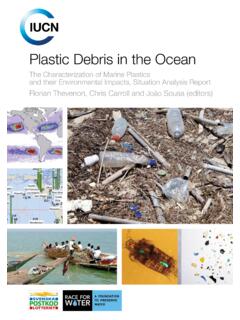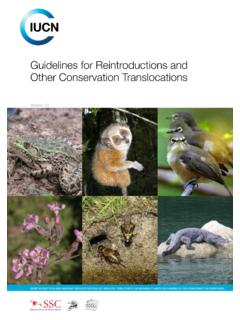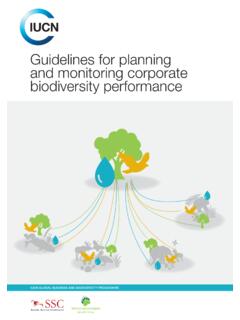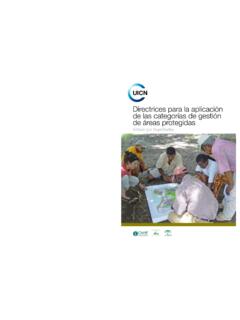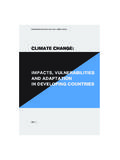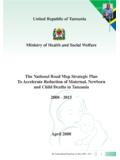Transcription of 100 OF THE WORLD’S WORST INVASIVE ALIEN SPECIES
1 100 OF THE WORLD SWORST INVASIVEALIEN SPECIESA SELECTION FROM THE GLOBALINVASIVE SPECIES DATABASEP ublished byIn Association withContribution to the global INVASIVE SPECIES programme (GISP) SPECIES SURVIVAL COMMISSIONC itationLowe S., Browne M., Boudjelas S.,De Poorter M. (2000)100 of theWorld s WORST INVASIVE AlienSpecies A selection from the GlobalInvasive SPECIES by The INVASIVE SpeciesSpecialist Group (ISSG) a specialistgroup of the SPECIES SurvivalCommission (SSC) of the WorldConservation Union (IUCN), published as special lift-out inAliens 12, December and reprinted version:November version available information, or copies of thebooklet in English, French orSpanish, please contact:ISSG Office: School of Geogra-phy and Environmental Sciences(SGES)University of Auckland (TamakiCampus)Private Bag 92019 Auckland, New ZealandPhone: #64 9 3737 599 x85210 Fax: #64 9 3737 042E-mail: image.
2 Brown tree snake(Boiga irregularis).Photo: Gordon RoddaPrinted in New Zealand by:Hollands Printing LtdContact: Otto van GulikEmail: of the 100 of theWorld s WORST INVASIVE ALIEN Spe-cies list has been made possible bythe support of the Fondationd Entreprise TOTAL (1998 - 2000).Biological InvasionWhat happens when a SPECIES is in-troduced into an ecosystem whereit doesn t occur naturally? Are eco-systems flexible and able to copewith change, or can a new arrivalhave far-reaching repercussions anddo permanent damage? Will some-thing special be lost forever? Doesit matter?In the distant past, the earth s moun-tains and oceans represented formi-dable natural barriers to all but thehardiest of SPECIES .
3 Ecosystemsevolved in relative isolation. Earlyhuman migration saw the first in-tentional introductions of ALIEN spe-cies as our ancestors attempted tosatisfy physical and social needs,but the magnitude and frequency ofthose early introductions were mi-nor compared to those associatedwith today s extensive global tradeand passenger is rich with tales of the dis-astrous outcomes of some inten-tional introductions such as that ofthe Nile perch, which resulted in theextinction of more than 200 otherfish SPECIES . We can avoid repeat-ing such mistakes by learning fromhistory. Yet surprisingly, potentiallydamaging introductions ongoing release of the mos-quito fish that feature in this bro-chure, is a good example.
4 Anotheris the questionable behaviour ofsome participants in the interna-tional garden seed and pet behaviour leads to unin-tentional introductions. So-called accidents now account for themajority of successful list of 100 of the World sWorst INVASIVE ALIEN SPECIES inthis booklet illustrates the incred-ible variety of SPECIES that have theability, not just to travel in ingen-ious ways, but also to establish,thrive and dominate in new , ALIEN invasion is second onlyto habitat loss as a cause of speciesendangerment and genes, SPECIES and ecosystemsthat make up the earth s biologicaldiversity are important becausetheir loss and degradation dimin-ishes nature.
5 SPECIES other than ourown have a right to exist and to re-tain their place in the world. We donot know how to estimate whichspecies are essential to ecosystemfunctioning, which are redundant,and which will be the next to flour-ish as the world changes. When weintroduce a new SPECIES into an eco-system, the full impact is often notimmediately apparent. Invasion byspecies such as Miconia calvescenscan change entire habitats, makingthem unsuitable for the original na-tive the earth s diversityis the best way to maintain our lifesupport system. There is evidenceto suggest that the biosphere actsas a self-regulating whole and thatdiverse systems may be more resil-ient. Island ecosystems, which haveevolved in isolation often have rela-tively fewer plants, herbivores, car-nivores and decomposers to main-tain essential processes and aremore vulnerable to invasion.
6 Onislands around the world speciesextinction is increasing at an un-precedented rate. A number of theinvasive ALIEN SPECIES featured inthis booklet are contributing tothese initiatives, which contributeto better management practices anda reduced incidence of biologicalinvasion, are being taken by com-munities all over the world. Inva-sive ALIEN SPECIES are now a majorfocus of international conservationconcern and the subject of coopera-tive international efforts, such as theGlobal INVASIVE SPECIES Pro-gramme (GISP). As awarenessgrows, people and their communi-ties are able to make informedchoices that will have lasting effectson their list of 100 of the World sWorst INVASIVE ALIEN SPECIES thatis presented here is designed to en-hance awareness of the fascinatingcomplexity, and also the terribleconsequences, of INVASIVE alienspecies.
7 SPECIES were selected forthe list according to two criteria:their serious impact on biologicaldiversity and/or human activities,and their illustration of importantissues surrounding biological inva-sion. To ensure the inclusion of awide variety of examples, only onespecies from each genus was se-lected. There are many other inva-sive ALIEN SPECIES , in addition tothose on this list of examples. Ab-sence from the list does not implythat a SPECIES poses a lesser hope that, by raising generalawareness, the risks of furtherharmful invasions will be reducedin Crazy Ant (Anoplolepis gracilipes)Brown Tree Snake (Boiga irregularis)Photo: H. T. Imai and M.
8 KubotaPhoto: Gordon RoddaCrazy ants (so called because of theirfrenetic movements) have invaded na-tive ecosystems and caused environmen-tal damage from Hawai i to the Sey-chelles and Zanzibar. On Christmas Is-land in the Indian Ocean, they haveformed multi-queen supercolonies in atleast eight areas of rainforest, foragingin all habitats, including the rainforestcanopy. They are also decimating the redland crab (Gecarcoidea natalis)populations. In 18 months the crazy antswere able to kill 3 million crabs. Theland crabs play an important role inChristmas Island s forest ecosystemhelping in litter breakdown and influencing forest composition by eating leaves andseedlings of rainforest trees.
9 Crazy ants also prey on, or interfere in, the reproduc-tion of a variety of arthropods, reptiles, birds and mammals on the forest floor andcanopy. Their ability to farm and protect sap-sucking scale insects, which damagethe forest canopy on Christmas Island, is one of their more surprising less than 5% of the rainforest on Christmas Island has been invaded sofar, scientists are concerned that endangered birds such as the Abbott s booby (Sulaabbotti), which nests nowhere else in the world, could eventually be driven to ex-tinction through habitat alteration and direct attack by the native of Australia, Indonesia, Papua New Guinea, and the Solomon Islands, thebrown tree snake is thought to have hitchhiked to Guam on military aircraft in thelate 1940s or early 1950s.
10 The lack of natural predators and ample prey allowed thesnake population to explode. By the 1970s it was found island-wide and had doneextensive economic and ecological dam-age. It has caused major power outagesacross the island and sometimes bitespeople, but is most infamous for its nearcomplete extermination of Guam s na-tive forest birds. The brown tree snakeis a serious threat to the biological di-versity of other tropical islands. It is ableto conceal itself in cargo on boats andaircraft and even in airplane wheel-wellsand has reached destinations as far afieldas Micronesia, Hawai i, mainlandUnited States and Spain. Areas most atrisk are wet tropical locations that re-ceive large volumes of human and com-mercial : Alexandre MeineszAvian malaria (Plasmodium relictum)Caulerpa infestationPhoto: Jack Jeffrey PhotographyHoneycreeper with malaria carrying mosquitosAvian malaria was introduced to Hawai i in exotic birds kept by settlers, but itneeded a vector to spread.


